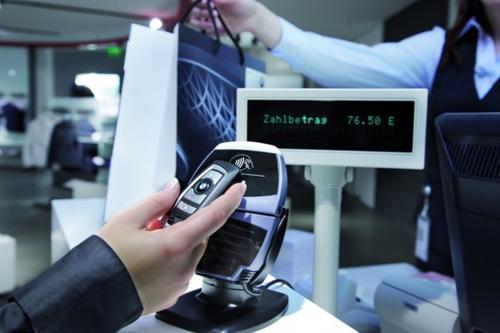The Low Down on Near Field Communication
How would you like to replace your wallet, your bus pass, your credit cards, even your local supermarket loyalty card with just your smartphone? It sounds like a giant leap forwards. However the Near Field Communication (NFC) technology makes this scenario not only feasible, but attainable here and now. Most of the modern smartphones sold around the world in fact already include NFC technology and have done so for at least a year or so. With the notable exception of Apple, which elected to leave out NFC technology from their iPhone 5, the major manufacturers such as Nokia, Samsung and others are working hard to extend NFC technology.
With two million NFC enabled devices sold in 2010, up to 100 million in 2012 and the market aiming for 300 million in 2013, NFC technology seems destined for a huge future. But what exactly is it? |  |
NFC technology, as its name suggests, is simply a method of transferring small amounts of data between two devices held a small distance apart, typically a few centimetres, without a physical connection. The technology is based on a low powered wireless link and evolved from radio frequency identification (RFID) technology.
Because it is low powered, no battery is needed in the device being read and, unlike Bluetooth technology, no pairing code is necessary. Simply tapping an NFC equipped smartphone on a terminal in a shop activates an app on the smartphone which records payment details immediately.
Although NFC has been around for almost 10 years now, growth has been limited by the lack of applications making use of the technology. Now, though, developers have caught up with the technology and applications and services are blossoming.
Apart from the major use of turning your smartphone into a smartcard for swift and simple payments, developers are coming up with more and more ideas to make use of the technology. Samsung, for example, has advertisements showing users of their smartphones simply tapping the phones together to share information. NFC technology is starting to appear in other devices too, such as printers, tablets and microwave ovens.
Other areas keenly interested in NFC technology include the airline industry and the healthcare sector. The International Air Transport Association, IATA, for example, is evaluating the technology for use in boarding passes, luggage check-in and security checks.
There are still problems to be sorted out with NFC applications and standardisation, for example so that more devices can work seamlessly together. However, in general, the future looks bright. Your smartphone could soon be a replacement for your TV remote, could control your cooking appliances and download information from NFC-equipped posters or maps, and so on. There is just one thing that worries me, what happens if you lose your NFC smartphone? |
